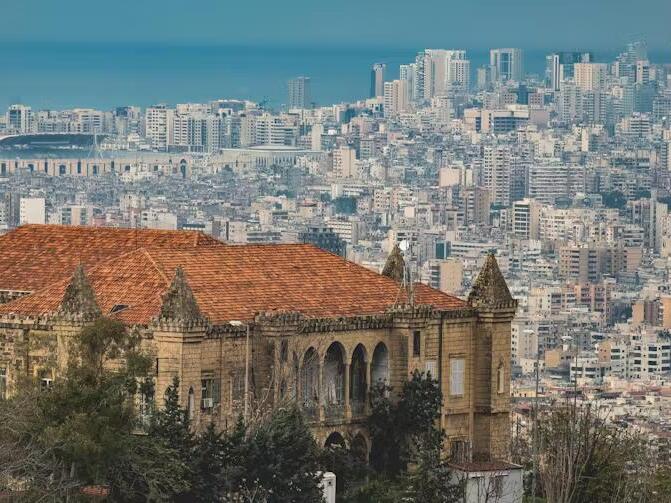Physical Address
304 North Cardinal St.
Dorchester Center, MA 02124
Physical Address
304 North Cardinal St.
Dorchester Center, MA 02124

In 1978, I first set foot in Lebanon, right in the midst of the Civil War and six years before Theodore Ell was even born. I reference this because despite our visits occurring at different times, Ell’s observations in his compelling new book, Lebanon Days – which covers the volatile period from 2018 to 2021 – resonate deeply with my own experiences.
At that initial visit, I was studying Arabic in Cairo under the guidance of the Australian Department of Foreign Affairs, who were keen to bolster their Middle East expertise following the 1973 Arab-Israeli war and subsequent oil price surge by Gulf oil producers. My department endorsed the trip to enrich my understanding of the Middle East and allow me to practice Arabic in diverse settings where the language is commonly used.
This was budget travel through Lebanon, Syria, and Jordan over three weeks, relying on “service” taxis and staying in hotels that barely qualified for a half-star rating. The aim was total immersion in environments with minimal English, ensuring that I had to use Arabic for everyday essentials.
Before heading to Beirut, I perused books about the region in the embassy’s library in Cairo. These books, written before the civil war, highlighted Beirut’s beautiful center, specifically Martyrs’ Square, which Ell often references in his book. Upon arriving at Beirut airport, I asked my taxi driver in formal Arabic to take me to Martyrs’ Square. He seemed surprised, likely due to my use of formal Arabic instead of the colloquial dialect. However, there was more to his reaction. When we reached the square, I found the palm trees had been reduced to stumps by high-velocity bullets.
Unknowingly, I had ventured into the “green line,” the dividing border between East and West Beirut – a principal battle zone during the war. The taxi driver, clearly anxious, refused to take me further into the Christian East due to his apprehensions as a Muslim.
In the subsequent years, I revisited Beirut, eventually working there for three years in the late 1990s. The country seemed to be recovering briefly during that time. While posted in Damascus in the mid-1980s, I occasionally went to Beirut with a staff member to perform official tasks during the sporadic lulls in the fighting. Whenever we stayed in West Beirut, we would often sleep in the then-closed embassy, safeguarding ourselves by dragging mattresses into the hallways to reduce the risk of injury from nearby explosions.
A distinct memory from that era was being treated to lunch by a Lebanese businessman at one of Beirut’s most refined restaurants, where French cuisine was served in a setting reminiscent of an upscale European dining establishment. The only oddity was the sandbags covering the restaurant windows, a stark reminder of the ongoing conflict.
The Taif Accord of October 1989 is generally considered the end of the civil war, although peace was fragile. René Moawad, Lebanon’s first postwar President, was assassinated just 18 days into his term. Progress and attempts at reconciliation were fraught with difficulties. Rafiq Hariri, who served as Prime Minister in the 1990s, used his fortune for Beirut’s reconstruction, but his request for a voluntary 10% tax on wealthy businessmen was met with skepticism.
Ell’s Lebanon Days captures such intricacies, drawing from his experiences and those of his wife Caitlin, an Australian diplomat. His narrative spans from the economic collapse triggered by the fall of the Lebanese pound’s artificial value to the social unrest sparked by the 2019 revolution. The Central Bank’s strategy to maintain the pound’s value through a confidence trick faltered in October 2019, leading to severe economic and social upheaval, with citizens from all of Lebanon’s 18 religious sects uniting in protest.
Then, the Covid-19 pandemic hit in early 2020. Ell and Caitlin were also infected, yet this did not stifle the revolution. The final blow came with the massive explosion at Beirut’s port in August 2020, caused by the improper storage of ammonium nitrate. Ell’s account of the explosion, for which he won the 2021 Calibre Essay Prize, is detailed in his book.
Ell effectively captures the contrasting realities of Lebanon, from the vibrant nightlife in East Beirut to the harshness of economic collapse. Some, no longer able to afford essentials, would still wander through chic malls, carrying luxury shopping bags as a facade.
Ell argues convincingly that the civil war never ended; it merely became less visible, perpetuating deep-seated religious divisions. One poignant example is Genevieve, a Maronite Christian woman, who confessed she had never encountered a Muslim, viewing their presence as an offense.
The Taif Agreement’s attempt at national unity included sectarian leaders who once waged war, with notable resistance from Samir Geagea, leader of the Lebanese Forces, who opposed Syrian influence and was jailed, unlike his counterparts who assumed ministerial roles.
During a 1997 briefing to a US congressional delegation, the US Ambassador humorously summarized Lebanon’s postwar situation, noting that war criminals either joined the Cabinet or were jailed if they resisted. Ell’s narrative is interspersed with historical context, detailing Lebanon’s series of invasions and the constant threat of Israeli action following Hezbollah’s attacks. His insightful commentary on Lebanese resilience and survival is underscored by the departure of many Lebanese friends, holding onto dual citizenship as a lifeline.
Lebanon Days is well-structured, with maps, historical timelines, a glossary, and recommended further reading. Ell’s eloquent prose sheds light on Lebanon’s complicated past and bleak future while highlighting the remarkable resilience of its people. This resilient artistry of survival defines this paradoxical country.
Source: The Conversation, Atlantic



